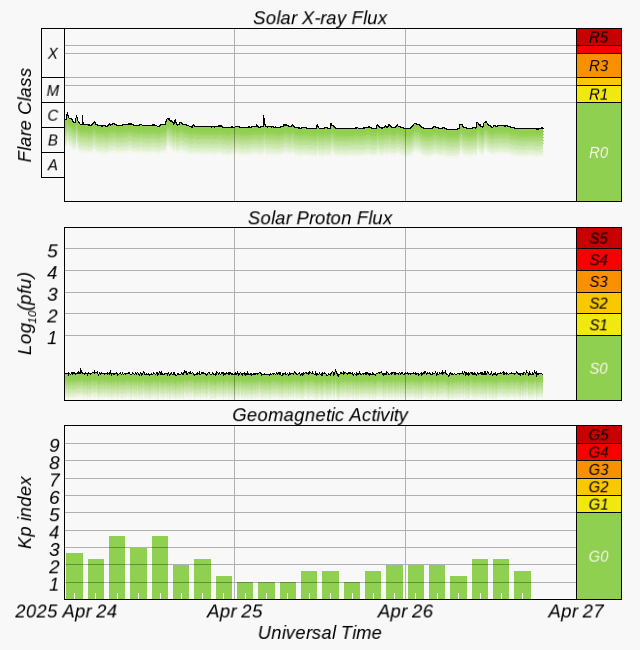One less wild proposal for climate obsessives to bother their heads with. Arctic summer sea ice levels clearly stabilised in recent years anyway.
– – –
Researchers have rebuffed a wild idea to use tiny, hollow glass beads to halt sea ice loss, finding that a coating of microspheres would actually accelerate ice melt instead of slowing it, says ScienceAlert.
In 2018, a study proposed spraying layers of glass powder, in the form of hollow glass spheres about the thickness of a human hair, over Arctic sea ice to brighten its surface.
This, the study authors said, would enhance the amount of sunlight reflected in a part of the world that is seeing some of the worst effects of climate change, lowering the surface temperature and giving sea ice a chance to recover.
Satellite data shows sea ice in the Arctic is “melting at a frightening rate” [Talkshop comment – not true]. Simulations suggest it could be completely gone in Arctic summers by 2050. But the new research puts forward a comprehensive set of calculations to show why tiny glass beads are not the answer.
“Our results show that the proposed effort to halt Arctic sea-ice loss has the opposite effect of what is intended,” says Melinda Webster, a polar scientist at the University of Alaska Fairbanks Geophysical Institute. “And that is detrimental to Earth’s climate and human society as a whole.”
Webster teamed up with University of Washington atmospheric scientist Stephen Warren to test the claims of the 2018 modeling study, which had concluded that a layer of 65 micrometer-wide glass spheres spread about five beads deep could increase the reflectivity and thickness of Arctic sea ice.
Where the 2018 study only considered thin sea ice with little snow cover, the duo calculated changes in solar energy across eight sea ice conditions found in the Arctic at different times of the year. They modeled the same thickness and type of hollow, glass microspheres.
Unlike the previous study, they considered seasonal snow and meltwater coverage, along with sunlight at sea level and in the upper atmosphere, cloud cover, and how the beads interact with sunlight.
Layers of microspheres can make new, thin ice more reflective, as the 2018 study showed. But the effect of the glass beads would be minimal because thin ice mostly occurs in autumn and winter when there is little sunlight, Webster and Warren write.
Come spring, most Arctic sea ice is blanketed in bright-white, deep snow, which is highly reflective, so adding glass beads would actually darken sea ice surfaces at this time of year, leading to greater warming and ice loss.
“Because hollow glass microspheres absorb some sunlight, spreading them onto sea ice would darken bright surfaces such as snow-covered ice,” Webster and Warren write. “The net result is the opposite of what was intended: spreading hollow glass microspheres would warm the Arctic climate and speed sea-ice loss.”
Full article here.







Glass beads! Another one for the ever growing book of ‘Nutty ideas’!
[…] Wild Proposal to Use Glass to Save The Arctic Could Backfire, Scientists Warn | Tallbloke’s Ta… […]
“a coating of microspheres would actually accelerate ice melt”
A study composed of mathematical algorithms produced what is commonly known about winter driveways and walkways?
Sesame Street science.
Scientists: ‘Yes, but look how hard we’re trying to find a solution to the problem we invented.’
Reblogged this on Climate Collections.
Back in the 1970s IIRC there was a crackpot scheme to ward off the coming Ice Age by spraying the Arctic ice cap with soot.
Nutters…
Geoengineering: billions will die.
I say, old chap, what if dumped all our plastic in the Arctic Ocean, instead of the Pacific?
One man’s trash . . . .
If people studied actual history and data, the ice accumulation on the ice sheets that are still on Greenland, based on ice cores, the ice accumulation is adequate to rebuild the ice sheets, only in warmest times when the Arctic Ocean is thawed, only in warmest times when ice shelves are minimal, is the ice accumulation adequate to rebuild the ice sheets.
When the Vikings lived in Greenland, a thousand years ago, the Arctic was open and the ice sheets were rebuilding. At the end of the Medieval Warm Period, the rebuilt ice sheets and glaciers advanced, causing the Little Ice Age, pushing the Vikings out of Greenland.
In the cold time, during the Little Ice Age, ice core records show the frozen Arctic prevented evaporation and snowfall on Greenland, the ice accumulation added ice on top of the ice sheets much slower than the edges that were being pushed into the warm currents around Greenland, the result was that the ice pushed into the Gulf Stream and kept chilling the water to maintain the Sea Ice until the ice on Greenland was depleted. Then the ice sheets and glaciers on Greenland and on other lands around the Arctic retreated, causing this normal and natural warm time that always has followed cold times.
This modern warm time, the coldest warm time during the recent ten thousand years, with low sea ice and low ice shelf cover, is necessary to rebuild Greenland and other sequestered ice around the Arctic. The ice will rebuild slower than in the past because the orbit cycles have moved the solar energy into the earth climate systems more into the southern hemisphere. The sun is currently heating the southern oceans more than the northern oceans, ten thousand years ago the opposite was true and more sequestered ice on land was needed and produced.
The sun powers the polar ice machines, the sun heats tropical oceans and the ocean currents carry the energy into polar regions to power the ice machines. The polar regions regulate this ice machine with ice shelves and sea ice. When polar ice is adequate, ice is pushed into the tropical currents and they are chilled to form sea ice and turn the ice machines off. When polar ice is not adequate, the warm tropical currents remove the sea ice and ice shelves and the ice machines are turned on.
These truths are evidenced by history and ice core records.
Proof that warmists are irrational nutters.
Satellite data shows sea ice in the Arctic is “melting at a frightening rate”
About 15 years out of date. Summer sea ice was supposed to have disappeared several years ago but it never happened, and it won’t happen any time soon either.
Another fake alarm with no substance. Next!
El Hierro
Climatic impacts of the October 2011 to March
2012 El Hierro submarine volcanic eruption
In this look-back-and-learn analysis of
the submarine eruption of the El Hierro
volcano it is concluded that we have grossly
underestimated the role played by submarine
volcanic eruptions as a trigger of weather-related
events or patterns within the North
Atlantic Basin. Unlike the conclusions drawn
by a number of workers, it is unnecessary
to attribute such weather-related events or
patterns to anthropogenic global warming.
Click to access el-hierro-eruption.pdf
[…] Wild Proposal to Use Glass to Save The Arctic Could Backfire, Scientists Warn […]
. . . and what effect undersea volcanoes have on the size of the basin.
Is SLR due to volcanoes reducing the size of the basin?
‘Could be gone by 2050’
After they’ve retired. Convenient.
And, again, an ice-free Arctic would be a GOOD THING!
Reblogged this on Calculus of Decay .
NASA says volcanoes cause a temporary drop in sea levels by cooling the oceans. They didn’t mean undersea volcanoes.
https://sealevel.nasa.gov/news/56/volcano-masks-quickening-pace-of-sea-level-rise
Melting sea ice should cool the surrounding ocean also?
‘Saving’ Arctic summer sea ice? The standard mean would be lower if it was 1971-2000 instead of 1981-2010 because the modern (latest) peak was around 1978-80. The ‘frightening’ melt rate is above the 2016 line, so who’s scared?